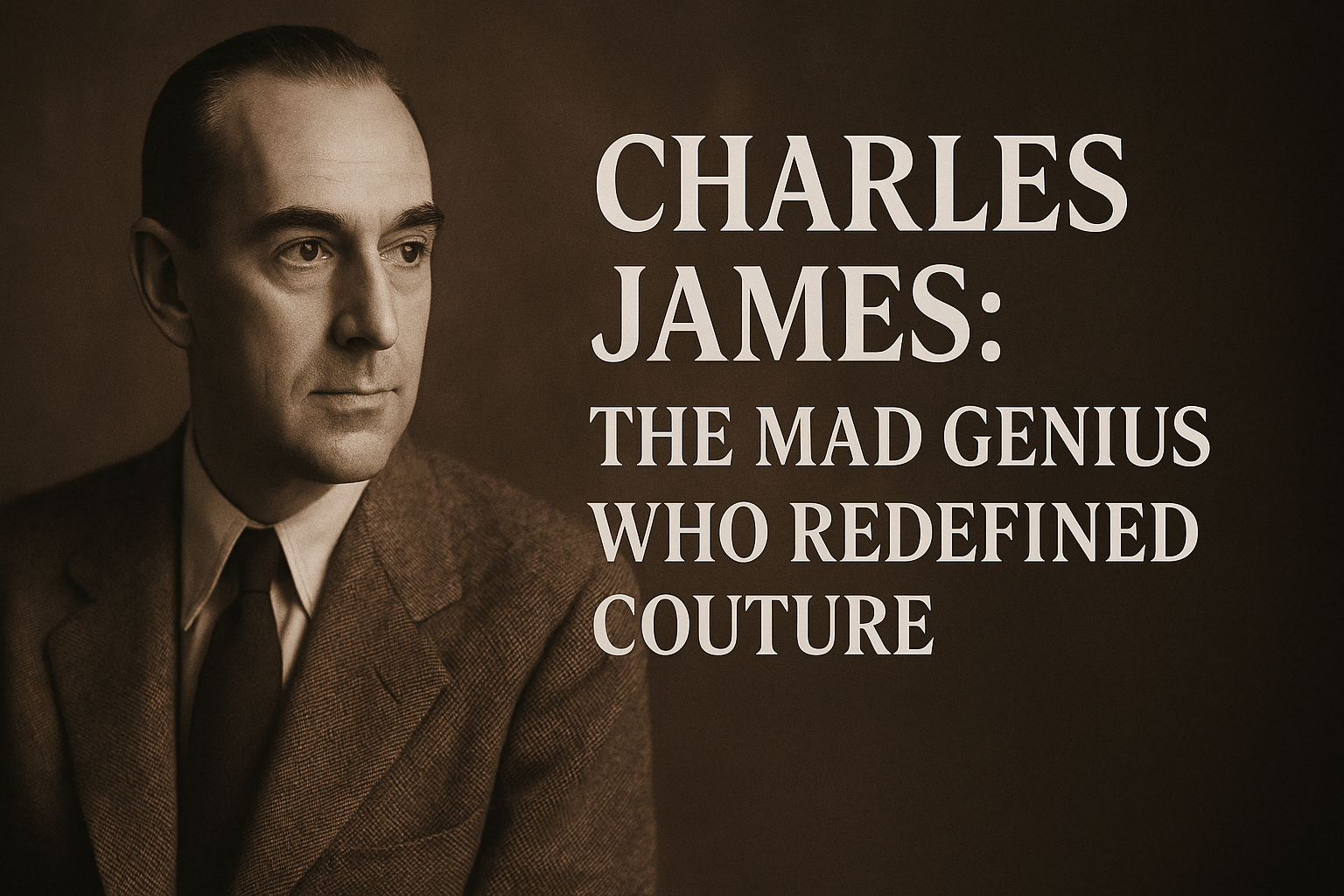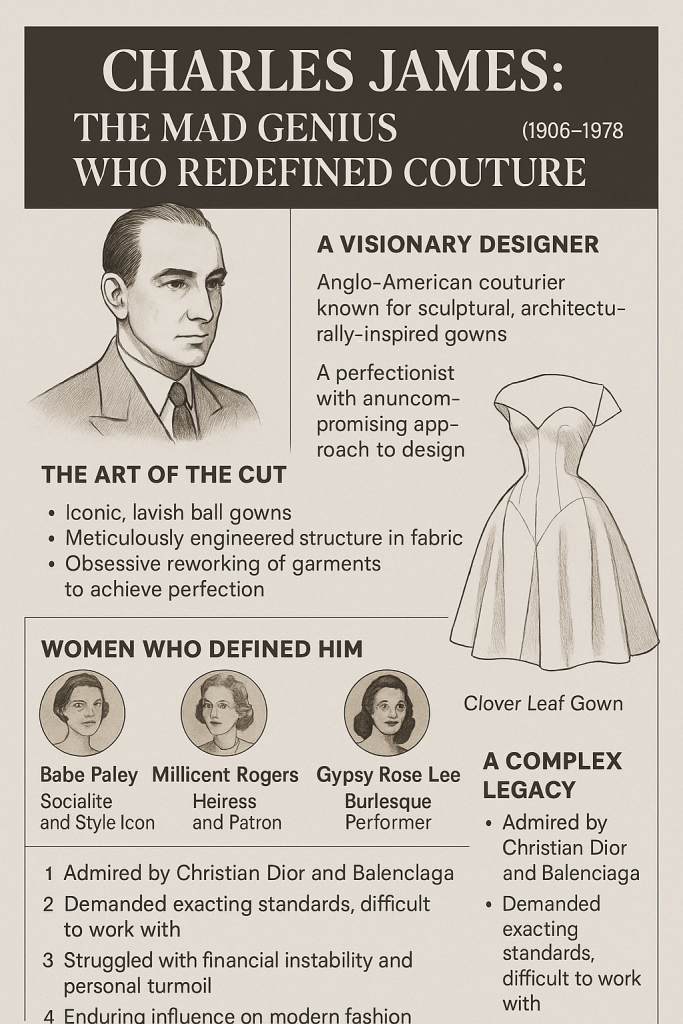
A Legacy Draped in Genius and Drama
When discussing the greats of 20th-century fashion, few names invoke both reverence and fear quite like Charles James. Often described as the “most brilliant dressmaker in America,” James wasn’t just a designer—he was an architect of elegance, a mathematician of movement, and a perfectionist to the point of obsession. Every curve in his garments reflected a restless genius consumed by his quest for structural perfection.
James’ work wasn’t sewn; it was engineered. His gowns, worn by mid-century icons such as Babe Paley, Millicent Rogers, and Dominique de Menil, blurred the line between fashion and sculpture. To Salvador Dalí, his dresses were “soft sculpture”; to Christian Dior, he was “the greatest talent of my generation.”

The Art of the Cut
What made Charles James extraordinary wasn’t just his aesthetic, though the lavish ballgowns like the iconic “Clover Leaf” and “Butterfly” dresses were indisputable works of art—it was his refusal to compromise. “Brancusi had his medium. Picasso, Faulkner, Shostakovich, theirs. Mine happens to be cloth,” James once proclaimed, likening himself to the titans of modernism.
His methodical, often tortuous creative process resulted in garments that were frequently reconstructed several times before reaching completion. Many never did. Some clients were known to wait years for pieces—some of which remained unfinished. His seamstresses feared him. His patrons adored him—or at least, the vision he represented.
Charles James and the Women Who Defined Him
A couturier is only as good as his muses, and James was surrounded by a dazzling array of them. From aristocrats to avant-garde artists, his clientele reflected the elite cultural world of his time. Gypsy Rose Lee, the legendary burlesque performer, commissioned him for her stage costumes. Millicent Rogers, whose style still inspires, practically lived in his designs.
His complicated relationship with Eleanor Lambert, the famed fashion publicist, is emblematic of his duality—genius wrapped in difficult temperament. Even Schiaparelli and Chanel, his contemporaries and sometimes rivals, recognized his unparalleled talent by ordering pieces from him for their wardrobes.
A Tragic Arc: From Fame to Infamy
Despite accolades, including the prestigious Coty Award, James struggled with financial solvency. Bankruptcy, litigious fallouts, and burned bridges plagued his career. By the time of his death in 1978 at New York’s Chelsea Hotel, he was living in obscurity, surrounded by unfinished sketches, toiles, and the tattered remnants of his unrelenting pursuit of perfection.
His designs, many now preserved at the Metropolitan Museum of Art’s Costume Institute, continue to influence a new generation of fashion designers and historians. The 2014 Met exhibition “Charles James: Beyond Fashion” served as a powerful resurrection of his brilliance, casting new light on his contributions and contradictions.
Charles James: More Than a Designer
In her acclaimed biography Charles James: Portrait of an Unreasonable Man, author Michèle Gerber Klein presents James as both hero and cautionary tale—a man whose genius was often undercut by his erraticism and perfectionism. Drawing on decades of interviews, including candid tapes with PR maven R. Couri Hay, Klein illustrates a life as layered and intricate as his creations.
His thoughts on contemporaries like Diana Vreeland—whom he scathingly referred to as “one of the parlor maids of fashion”—and Halston, whom he accused of plagiarism, reflect a man who saw himself not just in competition with the fashion world, but above it.
Why Charles James Still Matters Today
Charles James might have died in relative obscurity, but his vision lives on. Designers such as Zac Posen and John Galliano cite him as a major influence. His emphasis on construction and form resonates today in an era increasingly concerned with craft, sustainability, and timeless design.
In a fashion world that often prizes immediacy and mass production, Charles James remains a patron saint of slowness, meticulousness, and artistry.
Also read: Was Charles James Fashion’s Most Unreasonable Man?
Final Word: Remembering Charles James
To study Charles James is to confront a paradox: a man whose very brilliance contributed to his downfall. But his place in fashion history remains unshakable—etched not just in the seams of his couture, but in the DNA of modern design itself.
Reference Sources:

